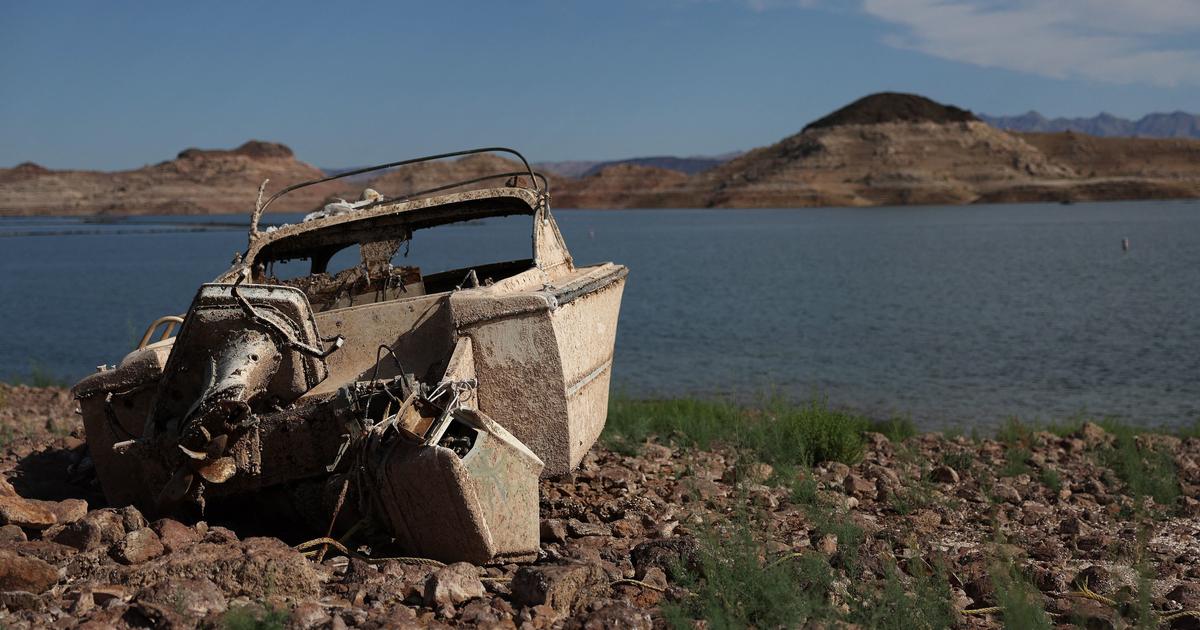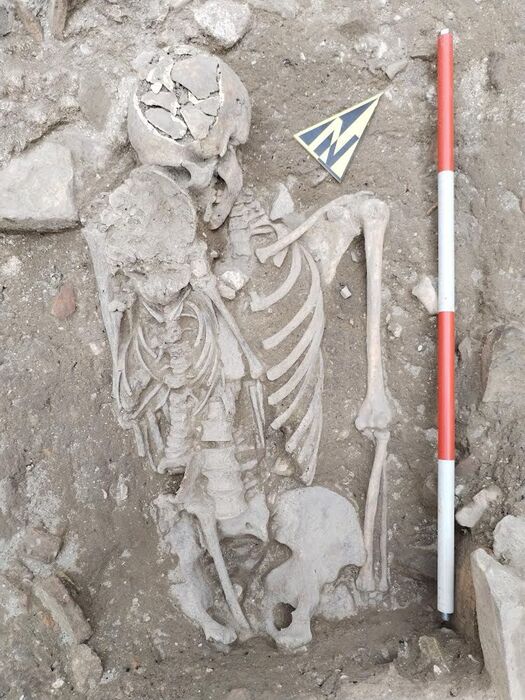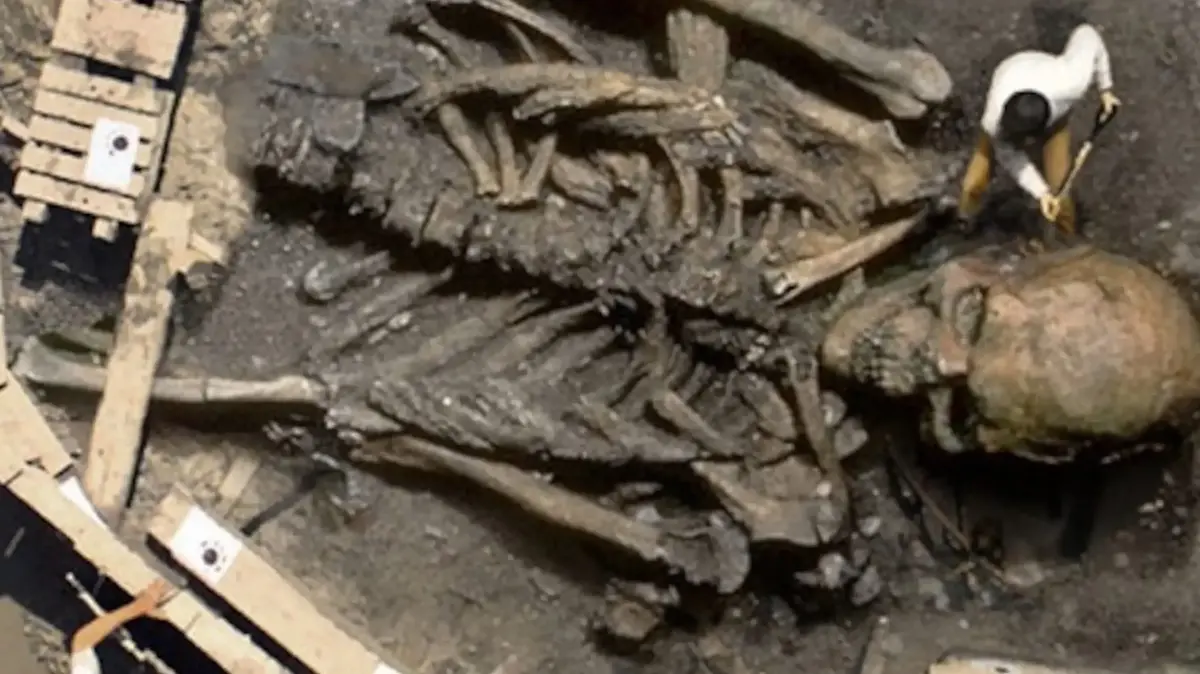Shells from the First World War, traces of dinosaurs, bodies of mountaineers... Thanks to the extreme drought that hit the world this summer, many remains that were once buried were discovered under the melted ice or in the bed of dry waterways.
Le Figaro
makes an inventory of these long-hidden finds.
Dinosaur Tracks, Texas
Among the most impressive discoveries, that of dinosaur tracks, in the heart of Dinosaur Valley in the United States.
About 113 million years old, they came to light this summer in the bed of a river located in this state park, opened in 1972 in Texas and known for its many remains of prehistoric animals.
"
Due to excessively dry conditions, the river has completely dried up in most places, which has revealed new traces in the park
," said Stephanie Salinas Garcia, of the Department in charge of parks and conservation. Texas wildlife.
»SEE ALSO – In Texas, the drought unearths traces of dinosaurs
These footprints would belong to two types of dinosaurs: Acrocanthosaurus, a theropod of five meters and seven tons;
and the Sauroposeidon, which can be up to 18 meters tall with its long neck, and weigh 44 tons when fully grown.
It could be one of the longest series of dinosaur footprints in the world.
Read alsoTrees in French forests weakened by drought
The remains of a fortified town in Burgundy
For years, many archaeologists have been searching the land of the village of Vix (Bourgogne-Franche-Comté) to find traces of its past.
Everyone agrees on the fact that the locality, where the famous vase of Vix was recovered in 1953, housed a fortified town on fifty hectares 2500 years ago.
Either one of the most important sites in Europe during the Hallstatt period, which corresponds to the First Iron Age, as explained by our colleagues from France 3.
This summer, the drought provided new proof of its existence: seen from the sky, an alfalfa field in the commune reveals astonishing patterns, including a long green line bordered by circles, inscribed in the earth.
They demonstrate the ancient presence of a large structure.
A little further, the scientists observed the foundations of a building about thirty meters long and six meters wide.
Discoveries which, according to archaeologists, attest to the "
quasi-urbanized organization
" of the "
Gauls
" who lived in the area.
Only 2% of the site has so far been updated.
Nazi ships and shells in France, Italy and Serbia
The world wars did not reveal all their secrets.
In the Meuse, at the end of August, the demining service of Metz recovered several shells dating from 14-18, including one weighing 43 kilos.
It lay at the bottom of the river for over a hundred years, and was unearthed due to drought.
Further south, in Italy, authorities detonated a 450-kilogram bomb that was buried in the Po River (Lombardy).
In Serbia, about twenty carcasses of Nazi ships were revealed, still loaded with explosives and ammunition, in the hollow of the Danube.
These ships were part of the German Black Sea fleet, and retreated in 1944 from Soviet forces.
Disrupting maritime traffic and representing a danger for the locals, the Serbian government plans to remove some of these vessels, estimating the operation at 30 million euros.
Read alsoLebanon, "water tower of the Middle East", threatened by drought
"Hunger stones" in Europe
Rocks looking like funeral warnings have been unearthed along the Elbe and the Rhine.
So-called hunger stones, on which are inscribed lugubrious phrases, such as "
if you see, cry
", had been installed throughout Europe from the 15th century.
Their objective?
Indicate hydrological benchmarks to signal an episode of drought and, in fact, a heavy deficit of crops and food.
On average, the Hunger Stones, numbering a few dozen, would come out once a century, experts say.
600-year-old Buddhist statues in China
Three ancient submerged Buddhist statues have been revealed by the historic drought that hit the Yangtze River near Chongqing in southwest China.
They were built nearly 600 years ago during the Ming Dynasty.
They represent in particular a monk seated on a pedestal in the shape of a lotus.
In the region, 66 rivers were dry this summer, while 45°C were recorded in several parts of China.
” SEE ALSO – A tributary of the Yangtze River dried up due to drought in China
Corpses in Nevada and the Alps
No less than five corpses reappeared this summer in Nevada (United States), in the heart of the dry Lake Mead.
Closest to the city of vice, Las Vegas, one of the bodies found had been locked in a barrel in the 1980s, after suffering a gunshot wound.
Other human remains were spotted next to a gun.
Fed by the Colorado River, Lake Mead, a gigantic reservoir attached to the Hoover Dam, reached its lowest level since 1937 this summer.
In the Swiss Alps, two French mountaineers discovered bones on August 3 while climbing the Chessjen glacier in the canton of Valais, reports RTS.
A week earlier, a skeleton, with the head separated from the body, was detected by two other Frenchmen on the Stockji glacier, near the famous alpine resort of Zermatt.
A plane wreckage was also spotted nearby.




/cloudfront-eu-central-1.images.arcpublishing.com/prisa/56FQEM4G6NDS5LIUHQJBCIVXEI.jpeg)


/cloudfront-eu-central-1.images.arcpublishing.com/prisa/QY5MBY2P2NDS3GSQJZP5S7XYSA.JPG)







